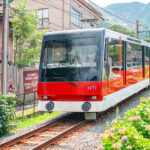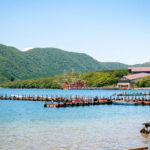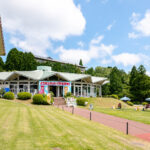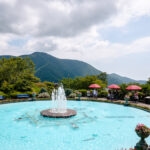This post may contain affiliate links. Please read our disclosure policy.
Glide above Hakone’s volcanic landscape on the Hakone Ropeway, explore Owakudani Valley’s steaming vents, and try the famous black eggs said to add years to your life.
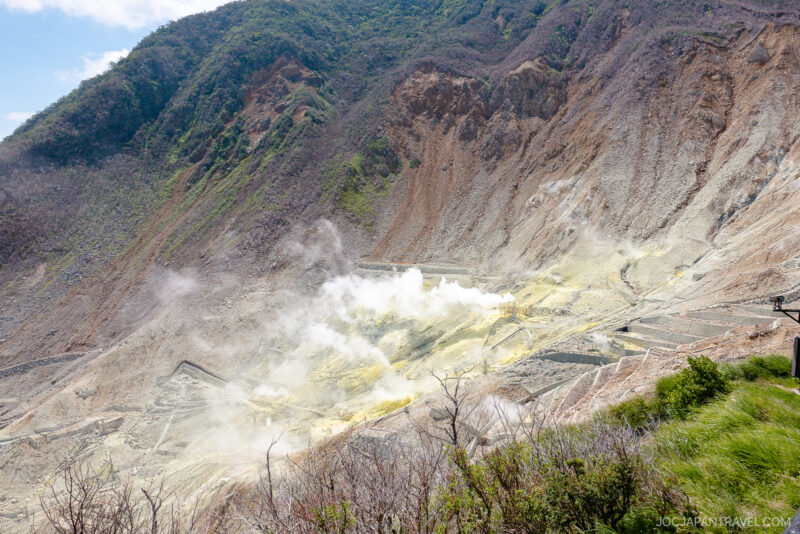
What Is the Hakone Ropeway?
The Hakone Ropeway is a 4-kilometer (2.5-mile) aerial gondola ride that connects Sounzan Station (早雲山駅) to Togendai Station (桃源台駅) on the shore of Lake Ashinoko (芦ノ湖). Along the way, it stops at Owakudani Station (大涌谷駅) and Ubako Station (姥子駅).
The full ride takes about 30 minutes and is one of the longest aerial cable cars in the world. On clear days, the views stretch from Mount Fuji to Lake Ashinoko, making it one of Hakone’s most scenic highlights.
Good to Know Before You Ride
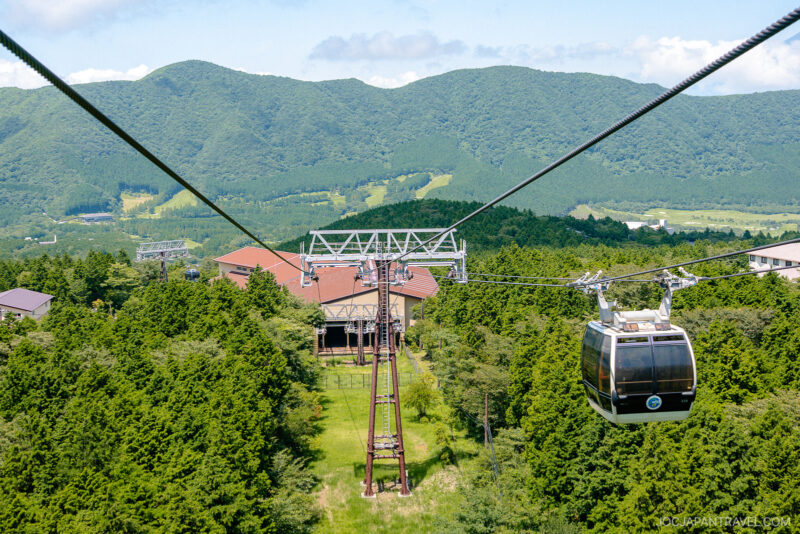
- Included in the Hakone Freepass – The ropeway is fully covered.
- Check for closures – Operations sometimes pause due to volcanic activity or weather.
- Sulfur gases – Owakudani has strong sulfur fumes. Visitors with respiratory issues should take precautions.
Starting at Sounzan Station (早雲山駅)
We began our ride at Sounzan Station, which is next to the Hakone Tozan Cable Car line. With parking available for drivers, it’s a convenient starting point. Once in the gondola, the mountain scenery opened up quickly, and we soon spotted the white steam rising from Owakudani Valley.
Owakudani Station (大涌谷駅): Exploring Hell Valley
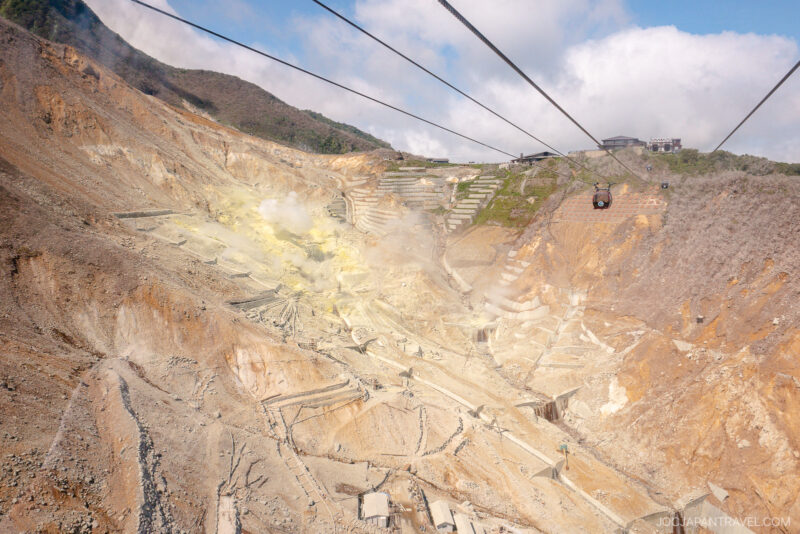
Owakudani was formed by an eruption of Mount Hakone about 3,000 years ago. Today, it remains an active volcanic zone, filled with sulfur vents and bubbling hot springs. From the observation decks, we could see plumes of steam and, on clear days, Mount Fuji towering in the distance.
Eating the Famous Black Eggs (黒たまご)
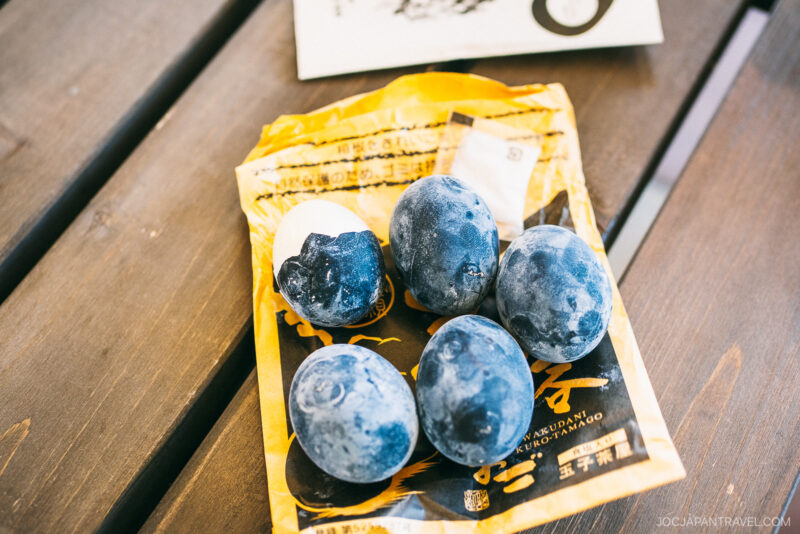
No visit to Owakudani feels complete without tasting the famous black eggs, boiled in sulfur springs until their shells turn jet black. Legend says each one adds seven years to your life. Our kids were doubtful, and our daughter even held her nose at the smell, but they still tried them.
Before 2015, visitors could hike the Kurotamago Nature Trail to see the egg-cooking site up close. Parts of the area remain closed due to safety concerns, but several observation decks and shorter walking paths are open. One of our visits was before 2015, so we got to see the cooking process up close.
Ubako Station (姥子駅): A Quiet Stop
Ubako is a less-visited stop, mainly serving nearby hotels. If you’re lucky with the weather, it offers one of the best ropeway views of Mount Fuji. We didn’t get off here but enjoyed spotting Fuji’s snowcapped peak from the gondola.
Togendai Station (桃源台駅): Gateway to Lake Ashinoko
At the final stop, the ropeway descends toward Lake Ashinoko. From Togendai Station, visitors can board a sightseeing cruise on the lake’s pirate-style ships or explore lakeside attractions. The views as we arrived were spectacular, with the lake shimmering below and forested hills all around.
Family Travel Tip: Ropeway + Car
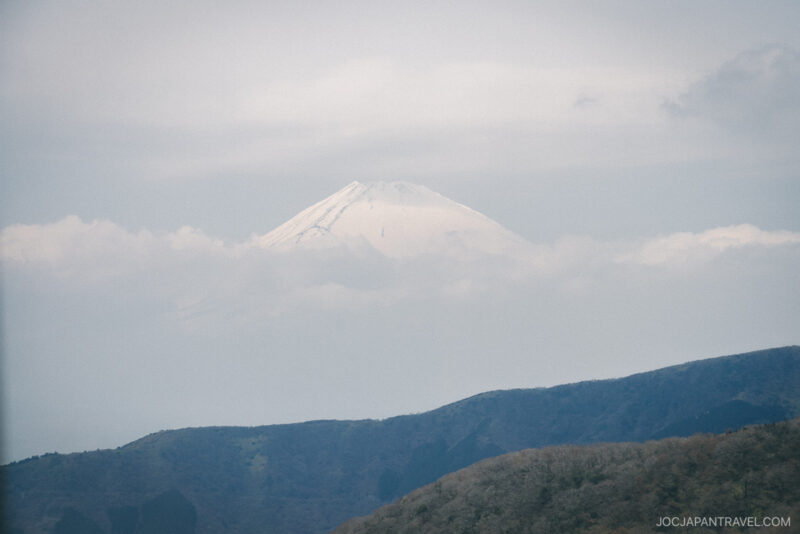
Since we usually drive in Hakone, we don’t always ride the full length. Our favorite route is to park at Sounzan, take the ropeway to Owakudani, explore for an hour or two, then return by gondola. From there, we continue by car to Lake Ashinoko. This way we don’t need to take the ropeway back to Gora and save some time.
How to Get to the Hakone Ropeway & Owakudani Valley
Train
From Hakone-Yumoto Station, transfer to the Hakone Tozan Railway to Gora Station. Ride the Hakone Tozan Cable Car to Sounzan Station. The ropeway starts at Sounzan.
From Odawara Station, continue on the Hakone Tozan Railway to Gora, then the cable car to Sounzan.
Ropeway
From Lake Ashinoko, go to Togendai Station by Hakone Sightseeing Cruise or by bus. Board the ropeway at Togendai for Owakudani (大涌谷) or Sounzan.
Car
Sounzan Station has a small paid lot. Owakudani has paid parking that fills fast on weekends. Roads may close during high gas alerts. Always check status before you go.
Note: The Hakone Freepass covers the Tozan Railway, cable car, ropeway, and lake cruise. Buy it at Odakyu counters in Shinjuku or Odawara.
Pro Tip: Start from Sounzan in the morning for better Mount Fuji views. If driving, park at Sounzan, ride to Owakudani, explore, then return to Sounzan.
Is the Hakone Ropeway & Owakudani Valley Worth Visiting?
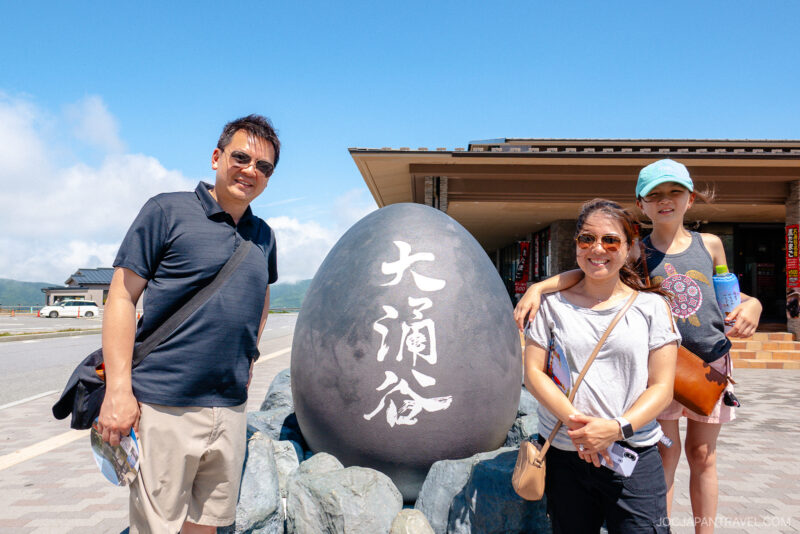
Our family has visited several times, and each trip has been just as thrilling as the last. The Hakone Ropeway is one of the area’s most unforgettable experiences, offering a mix of volcanic landscapes, cultural traditions, and sweeping views of Mount Fuji.
Gliding above the steam vents feels like a mini adventure, and tasting Owakudani’s famous black eggs is always a fun highlight. Spend an hour or a whole day—the Ropeway promises memories that will stick with you long after Hakone.
More to Explore Nearby
The Hakone Ropeway offers spectacular views of the dramatic volcanic activity in Owakudani, positioning you perfectly to explore the region’s scenic lake, historical port, and unique museums.
- Lake Ashi – Continue the scenic journey by boat across this caldera lake, known for its views of Mt. Fuji and the famous torii gate floating in the water.
- Hakone Shrine – Visit the spiritual heart of the area, located on the shores of Lake Ashi, renowned for its peaceful atmosphere and iconic red gate standing in the water.
- Hakone Checkpoint Museum – Discover the faithfully reconstructed historical checkpoint where travelers on the Old Tokaido highway were once inspected.
- Hakone Open-Air Museum – Head back toward Gora to visit this unique, sprawling outdoor museum, featuring modern and contemporary sculpture art.

